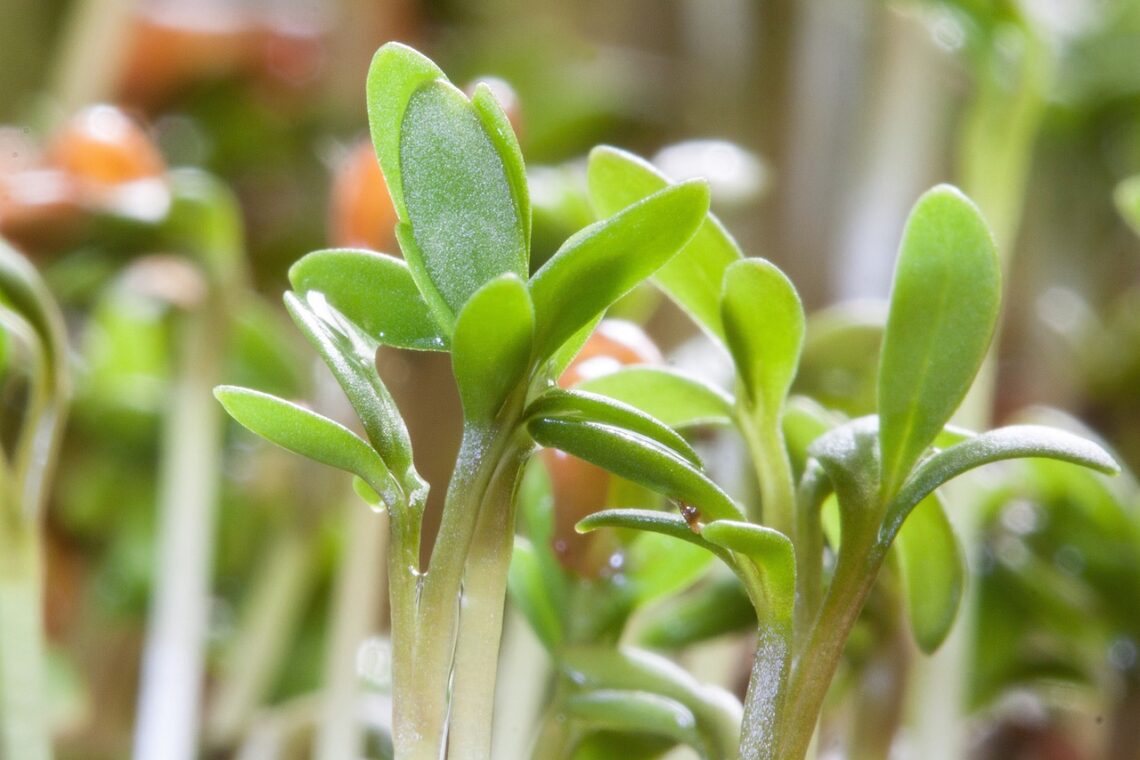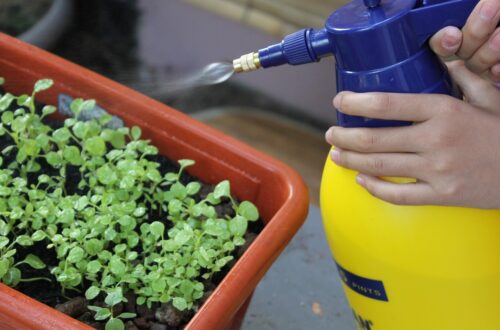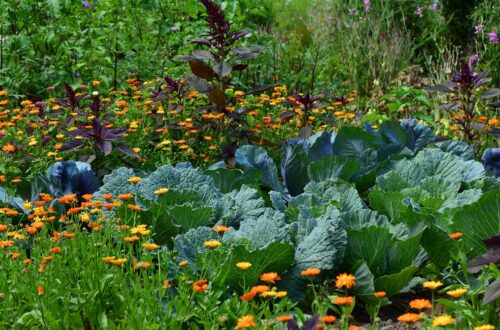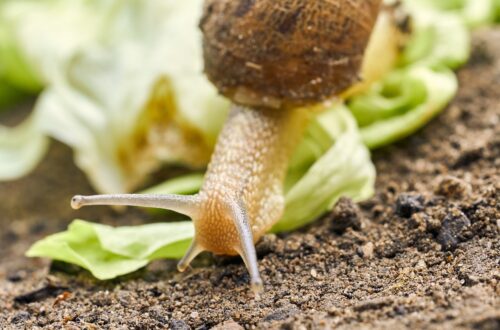Give flower and vegetable plants a head start by using the right grow lights for seed starting!
Selecting the best seeds and seed starting supplies is important if you want to grow healthy flower, herb and vegetable transplants. But perhaps the most critical step to starting seeds indoors is finding the right seed starting grow lights!
From LEDs to fluorescent shop lights, there’s a lot of grow lights to choose from. In this guide, I’ll teach you how to select the right seedling light for your needs, plus some quick tips for how to install and use grow lights for healthier plant starts!
Affiliate disclosure: As an Amazon Associate, I may earn commissions from qualifying purchases.
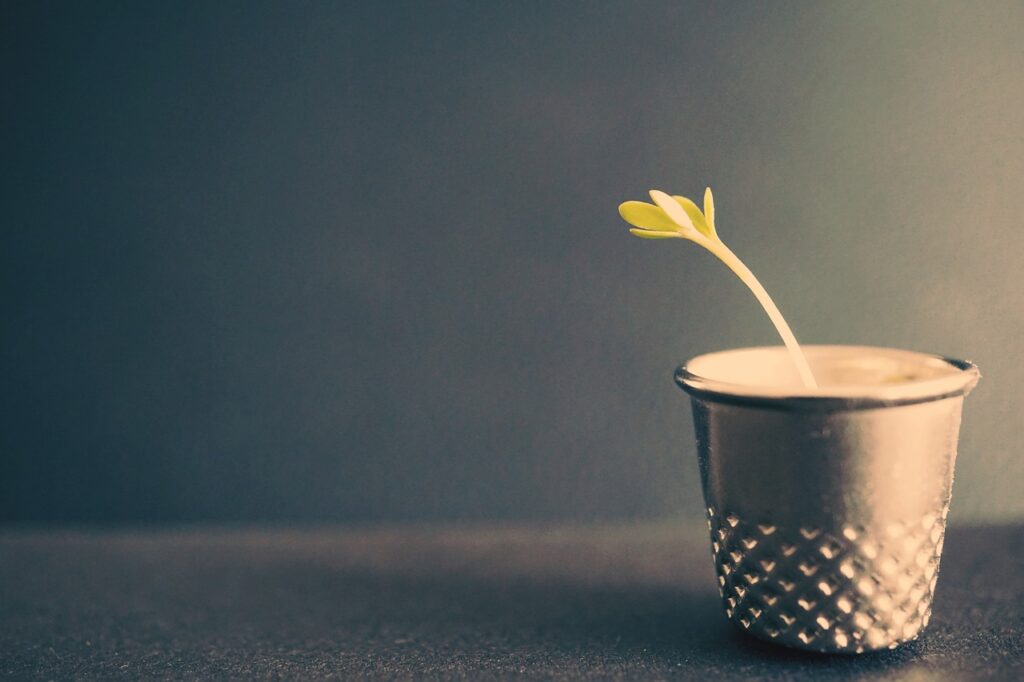
Are Grow Lights Necessary?
Many beginning gardeners attempt to grow seeds indoors on a sunny windowsill, but I don’t advise it. Seeds and seedlings need more light than full grown plants… about 14 to 16 hours of bright light daily to be exact. This can be difficult to achieve indoors under the best conditions, but it’s especially tricky during the winter when days are short.
Unless you have a very brightly lit window, I always recommend starting seeds indoors under grow lights. Seedlings that don’t receive enough light early on will usually developed stretched out, leggy stems that don’t offer enough support to the plant as it grows. On the other hand, transplants grown under a seedling grow light are usually much healthier and vigorous with stout stems and plenty of bright green leaves.
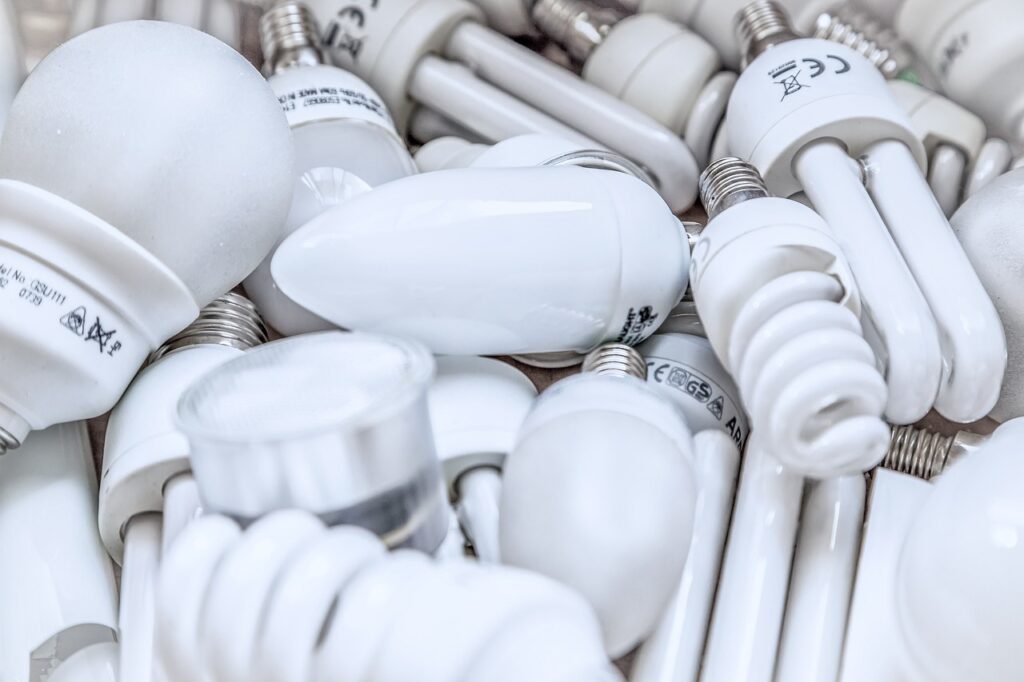
LED vs. Fluorescent Lights: Which One’s Better?
Most grow lights these days fall into one of two categories: LED grow lights and fluorescent grow lights. Both of these types of grow lights can be used for seed starting and indoor plant starts. But LEDs and fluorescents do have a few key differences.
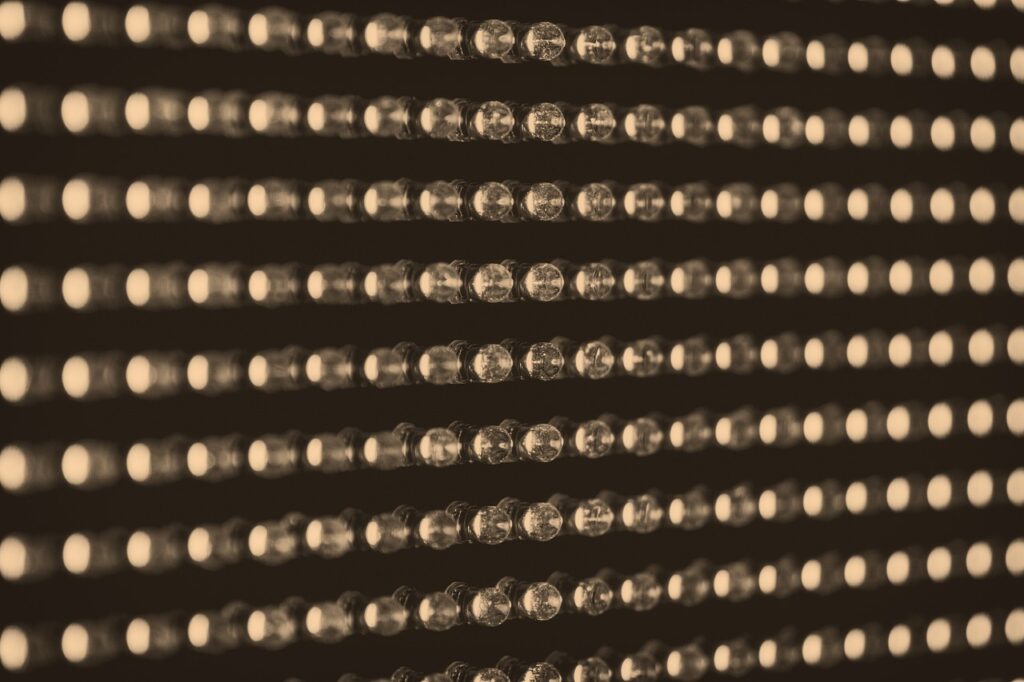
LED Grow Lights
LED grow lights are the most popular types of grow lights today and they’re very easy to find online or at garden centers. These lights are typically made of durable plastic and they have an easy on-and-off switch (sometimes with an automatic timer already built in!) The initial cost of LEDs is usually a bit higher than fluorescents, but these lights are ultra-energy efficient and they may pay for themselves over time.
Some of the main reasons why you may want to try LED grow lights for plants is that these lights are:
- Durable and long lasting. Unlike fluorescents, LED grow lights are usually glass-free and they don’t contain mercury gas, so you don’t need to worry as much if one tumbles to the ground. On top of that, LED lights typically last longer than fluorescents.
- Energy efficient. While fluorescent lights are more energy efficient than incandescent lights, they can’t hold a candle (pun intended) to LEDs. A study found that LEDs are 44% more energy efficient than fluorescent lights, which means they can help you save on your energy bill… and make your home more eco-friendly!
- Easy install. The best led grow lights for starting seeds are lightweight and easy to install. Although fluorescent lights are useful, they are often much bigger and their unwieldy nature can make them a challenge to hang on a small plant rack.
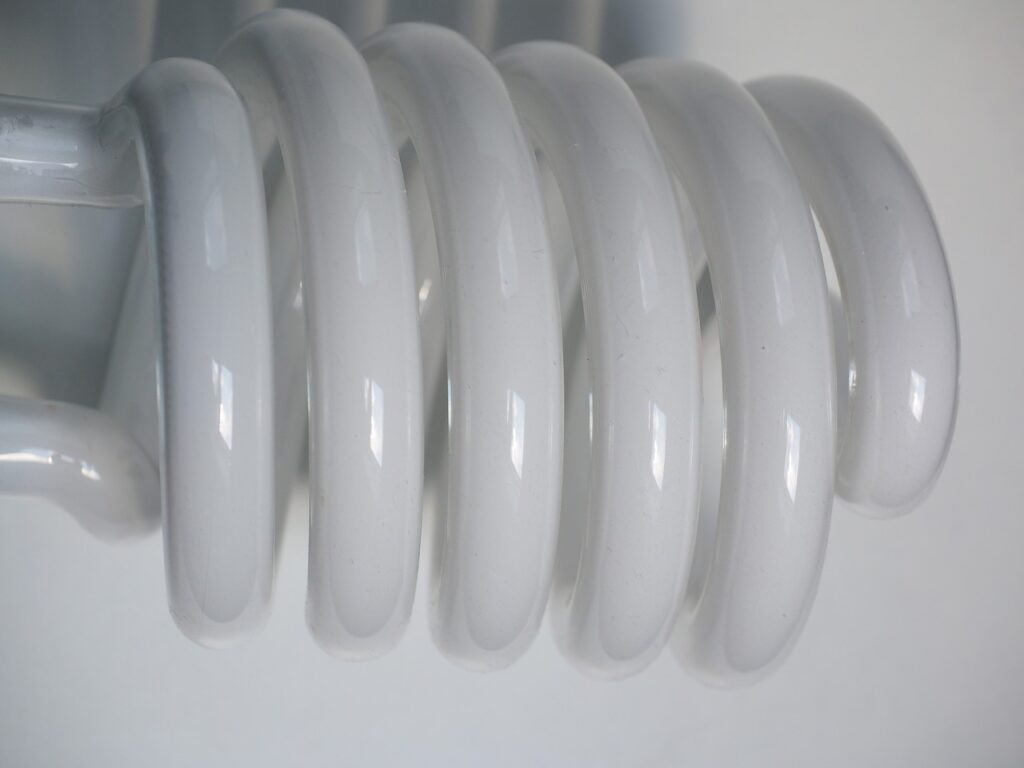
Fluorescent Grow Lights
Fluorescent grow lights usually have a metal frame (sometimes with an expandable reflector hood), which encloses glass fluorescent tube bulbs filled with mercury vapor and other gasses. Compared to LEDs, fluorescent lights are typically less expensive, although the bulbs do need to be replaced from time to time. If you’re into upcycling, you may be able to repurpose an old fluorescent shop light from your garage and use it for seed starting, but fluorescent tube bulbs can be a challenge to recycle.
Some of the main reasons why gardeners may choose fluorescent grow lights for plants is that these lights are:
- Inexpensive. Fluorescent lights tend to be less expensive than LEDs at the beginning. Just keep in mind that fluorescent bulbs will need to be replaced more frequently than LEDs, which may make them pricier over time.
- Easy to find. Fluorescent lights are readily available at garden centers and you can also order them online. Sometimes, you can even find these lights in secondhand shops or on websites like Craigslist.
- More coverage. Fluorescent shop lights are generally much larger than LED grow lights. While this can make them harder to install in small areas, they can usually provide light to more seedling trays and pots.
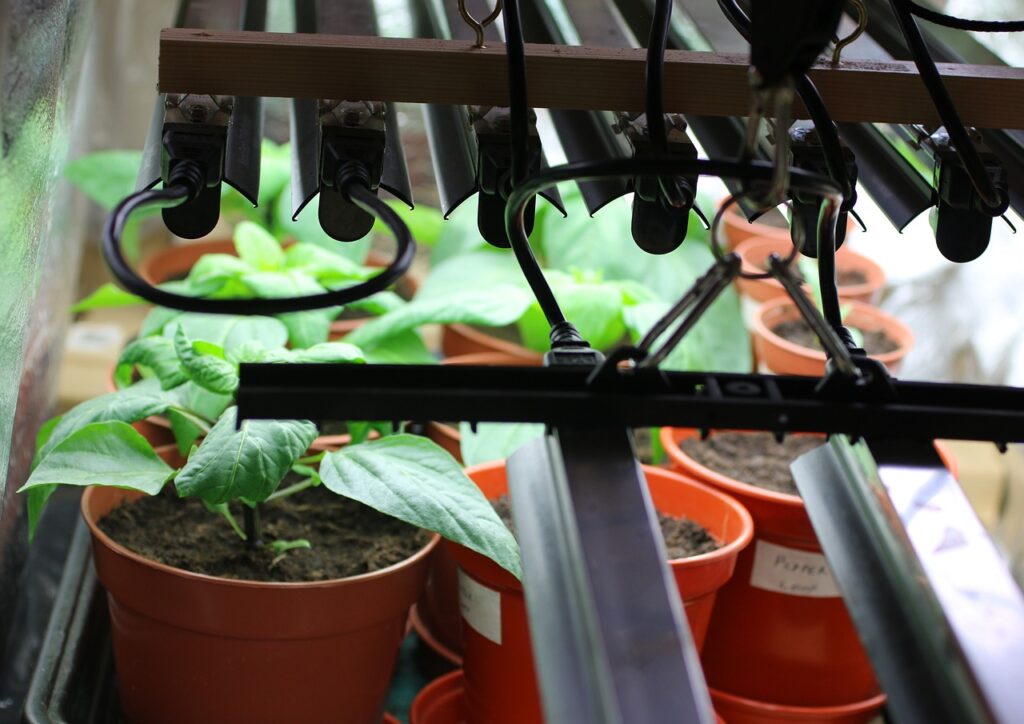
The Verdict:
What grow light you choose is up to you and I always advocate for using the products you already have, rather than running out and buying an all new set of grow lights. However, if you’re in the market for an energy efficient grow light that will last and provide all the light seedlings need, LED grow lights are hard to beat. Not only are they durable and eco-friendly, but LED lights are easy to work with and they’ll light up your grow room for many growing seasons to come!
If, however, you decide to go with fluorescent tube lights or you want to repurpose an old shop light for seed starting, that will work as well. Just keep in mind that fluorescent tubes can be hard to dispose of properly and safety. For recycling guidelines, this website (complete with a recycling locator) can help with old fluorescent tubes!
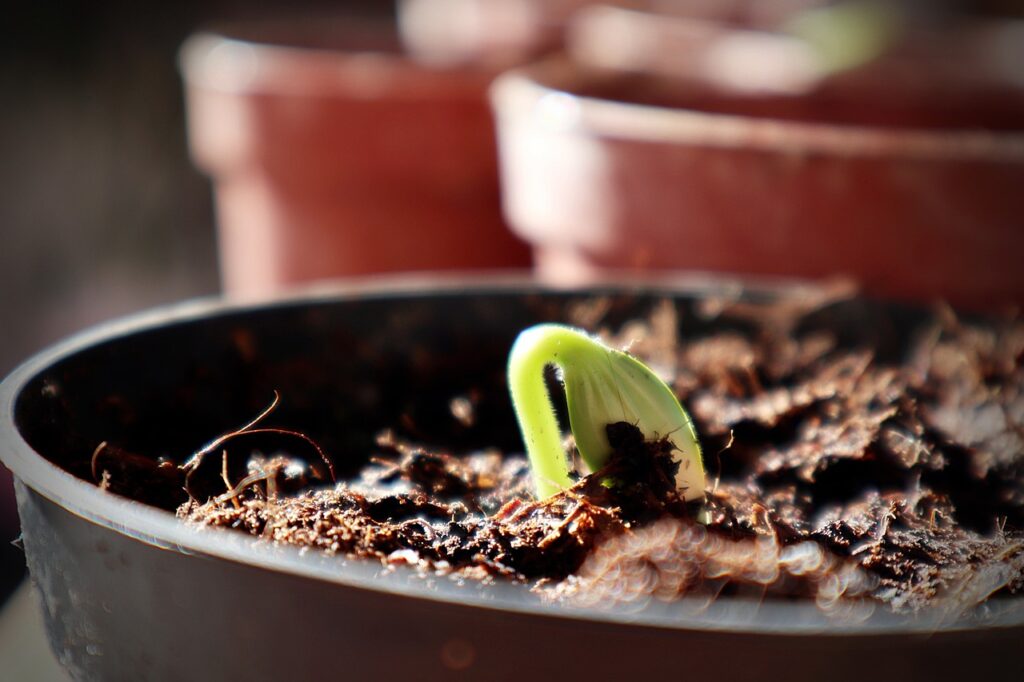
How to Use Grow Lights for Seedlings
Once you’ve selected your grow lights, it’s time to install them. But how exactly do you use grow lights indoors?
- Install lights the right way. Grow lights often come with chains or hooks, which allow the lights to be suspended on plant racks and shelves and adjusted as needed. Some grow lights are even linkable and they can be plugged into each other for easy installation and to reduce bulky power cords.
- Add an automatic timer. Seedlings will grow best if they’re provided with about 14 to 16 hours of light daily, followed by an 8 hour period of dark. The best way to make sure your plants receive the light they need is to plug grow lights into an automatic timer that will turn the lights on and off for you!
- Hang lights at the right height. A common problem with indoor seedlings is seedlings stretching towards lights that are hung too far away from the soil line. For best results, hang grow lights about 2 to 4” above seeds and seedlings and adjust the lights upwards as your plants grow.
- Clean grow lights regularly. Grow rooms can be dusty places and grow lights won’t emit as much light if they’re covered in grime. Dusting off your grow light bulbs about once a month will boost the light output and enhance seedling growth too!
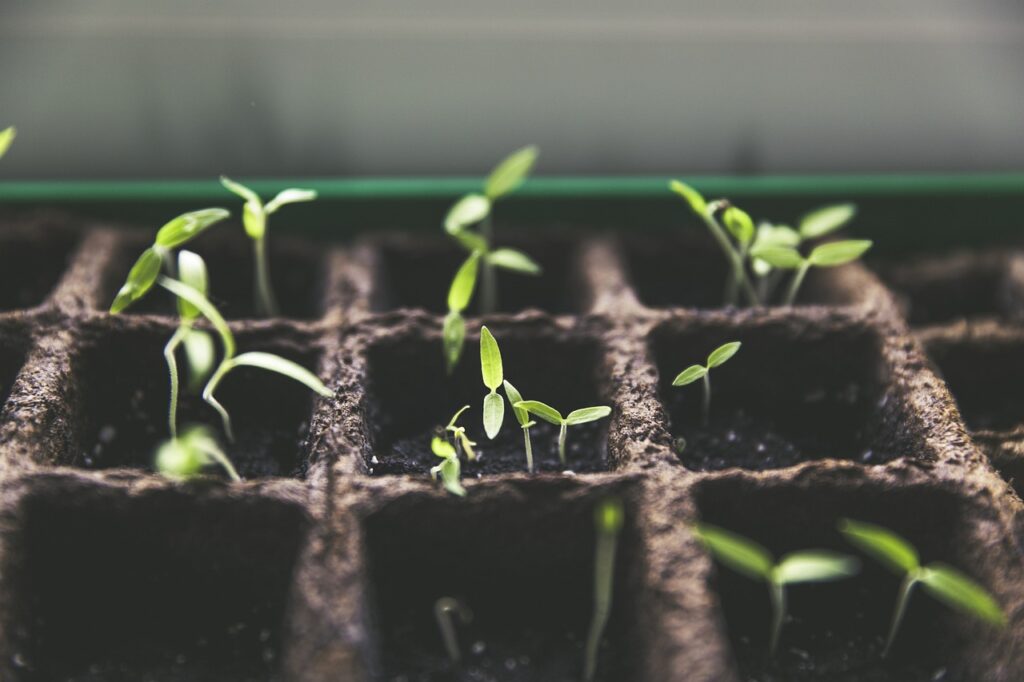
Frequently Asked Questions About Grow Lights for Indoor Plants
What Kind of Light Do Plants Need Indoors?
Seedlings need both RED and BLUE light to grow properly – red light supports leaf and flower development and blue light encourages plant and root growth. If plants don’t receive both light varieties, they can become stunted or develop spindly stems. Both LED and fluorescent full spectrum light bulbs emit red and blue light, or you can use “cool white” and “warm white” fluorescent bulbs together to achieve the same effect.
Should grow lights be on 24 7 for seedlings?
No. Seedlings will grow best if they’re provided with about 8 hours of dark every night. Keeping grow lights on continuously can stress seedlings out and affect their growth.
How do you know if seedlings are too close to light?
Seedlings that are too close to grow lights may develop light stress. This can cause plants to develop faded, spotted or discolored leaves with visible leaf veining.
